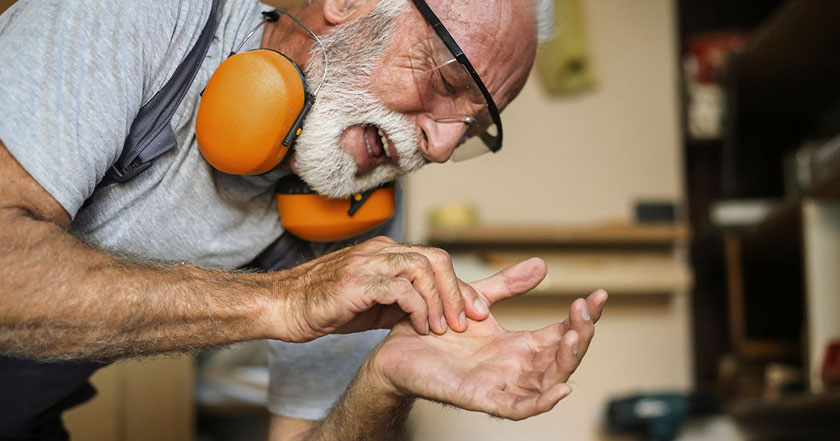
The dog barks, the baby cries, the doorbell rings, and… Ouch! One minute you’re washing dishes, and the next you’re holding a broken wine glass, wondering if you’ll need stitches for the deep cut on your finger.
Sometimes when you’re surprised by a cut it can be hard to know what to do next. We’re here to take away the guesswork with three signs to help you determine whether or not your cut needs stitches.
The first step is to wash your hands before treating your wound. This will help to reduce the risk of infection. Now it’s time to attempt to stop the bleeding. With a clean cloth or bandage, apply firm pressure to your cut and elevate the injured area above the heart, if possible. If the bleeding doesn’t stop, after 10 minutes, it’s time to check in with a clinician to see if stitches are necessary.
If the bleeding stops, clean the cut with mild soap and running water. The age-old recommendation of hydrogen peroxide may not actually be the best solution as it can irritate the skin, making it harder for your body to heal. Dry the area with a sterile cloth and finish the job by applying antibacterial cream and a bandage. If your cut is minor and doesn’t need stitches, your body should do the rest of the healing work at this point. Just take care to keep the cut clean by changing the bandage as needed (at least once a day) as the cut heals.
Cuts are never convenient but a visit to urgent care, like vybe, can help you make the most of a sticky situation.
If you’re still not sure whether or not you need stitches, you can schedule a telemed visit from the comfort of your own home. Based on what your clinician can see and the description you provide, he or she will determine whether or not an in-person visit is necessary. If it isn’t, you’ll get advice on how to care for your cut at home.
With urgent care, you’ll also encounter shorter wait times than ER, and convenient hours mean that you won’t need to try and work around PCP’s schedule.
Don’t let deep cuts slow you down. For minor to moderate cuts, come to vybe for quick, convenient care. We can stitch you up and have you feeling better in no time.
FIND YOUR VYBE